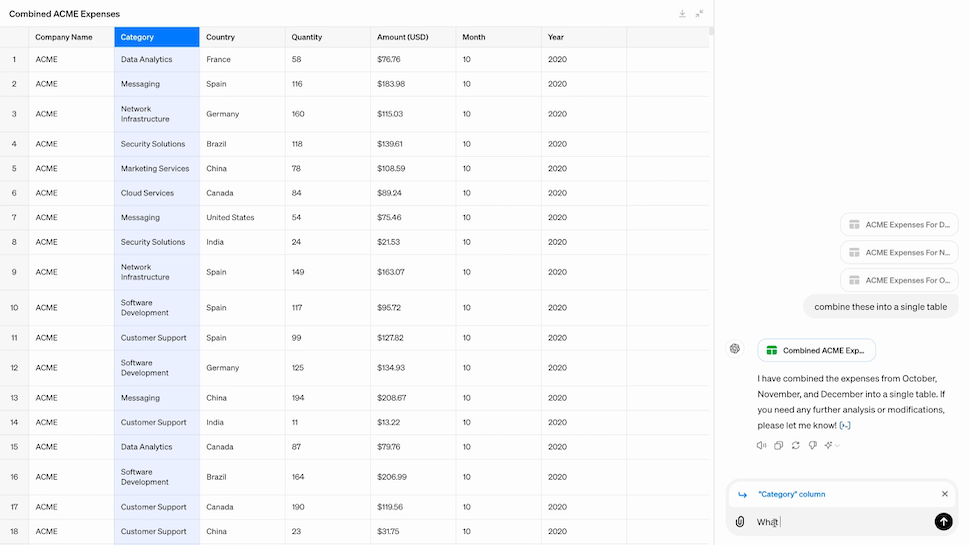The most successful companies in the future will be those that optimize their investment in AI. As companies begin their journey toward AI readiness, they must develop robust data management strategies to handle the increased volume and complexity of data, and ensure reliable data is available for business use. Poor quality data is a burden for users trying to create reliable models to extrapolate insights for revenue-generating activities and better business outcomes.
It is not unusual for business users to prioritize access to the data they need over its quality or usability. The simple truth is that if an organization has poor quality data and uses it to feed AI tools, it will inevitably generate poor quality and unreliable results.
Product Director, Ataccama.
Why data quality is important
Data quality is essential because it acts as a bridge between technical and business teams, enabling effective collaboration and maximizing the value derived from the data. Depending on the data source and governance requirements, this presents a time-consuming challenge for data scientists who can spend up to 80 percent of their time simply cleaning the data before they can begin working with it.
Merging data sources is a huge task. The work of combining and transforming multiple data sets, such as raw data from typical business operations, legacy data in a variety of formats, or new data sets acquired after an acquisition or merger, should not be underestimated.
This is important work for business development purposes. Data is critical to better target marketing and sales, drive product innovation and market expansion, improve customer service, and even create a chatbot or AI agent to improve brand experience. It is also vital to ensure compliance with the latest regulations and prepare for potential future requirements in key areas, including privacy and data protection, so businesses need to know which data contains sensitive information to protect it and prevent leaks or breaches. .
But not all data is created equal, and organizations must be able to identify high-value data that is critical to the business from low-value, low-risk data that requires no governance or protection. The only way to do this is to ensure that the data is clean and of high quality.
Cultivate a data-driven culture
Being data-driven is developing a culture across the organization that understands and actively seeks to extract value from data to underpin all decision-making, ensuring better business outcomes. It's less about having the data and more about knowing how to optimize it.
This requires a high level of maturity and commitment to develop this capability over time. One of the main challenges for organizations that are increasingly data-driven is to effectively connect technical and business teams. This is not a new problem, but many companies have not yet successfully addressed it and it is hindering their ability to be data-driven.
Data teams typically focus on building the foundation of data governance and setting up various tools and processes to help their organization. However, business teams may find that the data they get is too technical, not of the right quality, not in the right format, or simply not the right data they need. The data team may not understand the business context of the request and therefore what data is required, and this unintentional misalignment is a major challenge that organizations must overcome.
As a result, companies end up with data teams that do their best to build strong data governance systems, but business teams remain dissatisfied and underutilize the data. This is where accelerating data transformation with AI-enhanced data quality initiatives becomes critical. Business users need solutions that allow them to work with data independently: change formats, enrich it, and automatically solve problems using intelligent algorithms. This provides the reliable database needed to implement successful AI projects.
Successful AI starts with data governance
Despite the current hype around AI, Gartner has nevertheless estimated a loss of confidence in generative AI projects due to poor data quality as a primary reason, with at least 30 expected. percent will be abandoned by 2025 at the proof-of-concept stage. .
Ensuring data quality comes from establishing an organization-wide data governance strategy. This will ensure that the company focuses on the desired outcomes of using AI and generative AI, rather than deploying AI regardless of the state of the data that will be used to train it. However, AI is also a tool that will help make data AI-ready by reducing the manual oversight and work traditionally required to transform and clean data by automating processes and rules. It can also help profile and classify data and detect anomalies, contributing to the overall health of data sets.
GenAI can capture data in non-standard formats, including tables, images, and even audio, to ensure data quality rules are applied universally. AI also enables non-technical users to self-service and find the data they need by using natural language to process queries, supporting the creation of business value for an organization across each and every department. This process of data democratization is critical to the success of any AI initiative, as restricting its application and benefit to technical teams will severely restrict its impact.
Ultimately, quality is more important than quantity when it comes to AI training data. Each poor quality record will add confusion to the LLM, increasing the risk of hallucinations, and when poor quality data are consistently used, the reliability of the results will decrease. Today, there is an inflection point created by the rapid advancement of AI toolsets, the exponential increase in data, and digital and AI regulation, meaning organizations have a window of opportunity to implement their data strategy. With competitive advantage, market expansion, customer experience and business growth at stake, the winners will be those who prioritize this transformation now.
We list the best data visualization tools.
This article was produced as part of TechRadarPro's Expert Insights channel, where we feature the best and brightest minds in today's tech industry. The views expressed here are those of the author and are not necessarily those of TechRadarPro or Future plc. If you are interested in contributing, find out more here:









